When labels fade or marks look weak, buyers lose confidence. Many businesses waste money on rework and complaints. A fiber laser marking machine solves these problems by creating strong, permanent marks with high precision.
The main advantages of a fiber laser marking machine include accuracy, durability, flexibility, and low maintenance, making it ideal for industries that demand reliability and speed.
Fiber laser technology is not just about speed. It is about building trust through consistent, permanent marks. Let us look at the most common questions buyers ask about fiber laser marking machines.
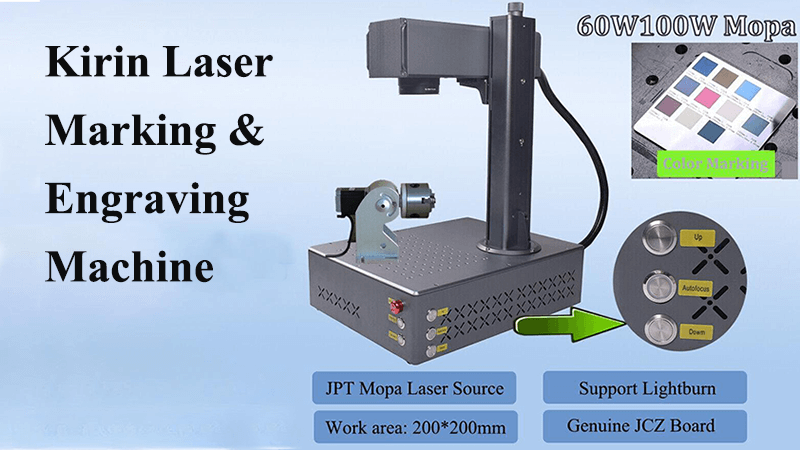
What is a fiber laser marking machine used for?
Many businesses use outdated methods like ink or mechanical engraving. These methods fade, wear out, or slow production. Customers complain when labels vanish too soon. Managers feel the pressure to find a better way.
A fiber laser marking machine is used to create permanent, high-contrast marks on metals, plastics, and other materials. Industries use it for serial numbers, barcodes, logos, and compliance marks.
Main Uses Across Industries
Fiber laser marking machines1 have many uses because they handle a wide range of materials. They make clear, durable marks that do not fade or wear off.
| Industry | Typical Use | Why Fiber Laser Works Best |
|---|---|---|
| Automotive | VIN codes, parts traceability | Resistant to heat, vibration, and wear |
| Electronics | Circuit boards, micro-components | High precision for small surfaces |
| Medical Devices | Surgical tools, implants | Permanent marks that meet regulations |
| Jewelry | Logos, serial numbers, personalization | Fine detail with no material damage |
| Tools & Machinery | Identification numbers, branding | Strong marks that withstand heavy use |
From Kirin Laser’s perspective, our clients often start with small marking needs and later expand. For example, one distributor needed serial numbers on medical tools. They first tried chemical etching but found it failed sterilization tests. Once they switched to our fiber laser marking machine, every mark passed inspection. This not only solved compliance issues but also built stronger trust with their customers.
I also recall one customer who marked thousands of tools each week. Their old labels peeled away during heavy use. When they upgraded to fiber laser, their customers reported zero returns for faded marks. That is the real power of permanent, reliable marking2.
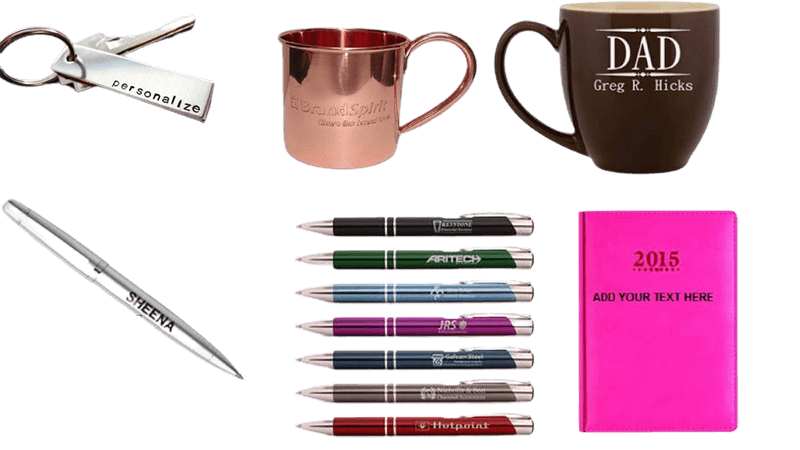
Is fiber laser marking accurate?
Precision is often the biggest concern. Buyers fear that small marks may look unclear or wear off. They want to be sure every mark is sharp and readable. Without accuracy, the machine fails its purpose.
Fiber laser marking is extremely accurate, offering precision down to microns. It can create clear marks on small surfaces, making it ideal for electronics, medical devices, and detailed designs.
The Accuracy Advantage
Accuracy is not just about sharp lines. It is about repeatability and consistency. Every mark must look the same, even after thousands of cycles.
| Feature | What It Delivers | Real-World Impact |
|---|---|---|
| Micron-level focus3 | Very fine detail | Logos and text remain clear |
| Non-contact process4 | No tool wear | Consistent marks over long periods |
| Controlled power | Deep, even engraving | Durable marks under harsh use |
| High stability beam | Uniform energy distribution | No variation between batches |
At Kirin Laser, we have seen how this accuracy creates value. One of my clients struggled with barcodes on small electronics parts. The old method blurred the edges, causing scanning failures. When they switched to our fiber laser machine, every barcode scanned instantly. This saved them hours of rework and gave their customers reliable products.
I have also seen accuracy change how companies market their products. Jewelry makers, for example, use fiber laser to engrave fine logos and serial numbers. The clarity of these marks adds a sense of luxury and trust. For John Smith, who distributes machines in the U.S., accuracy means less training time for staff and fewer complaints from end users. Accuracy builds confidence in both the machine and the brand behind it.
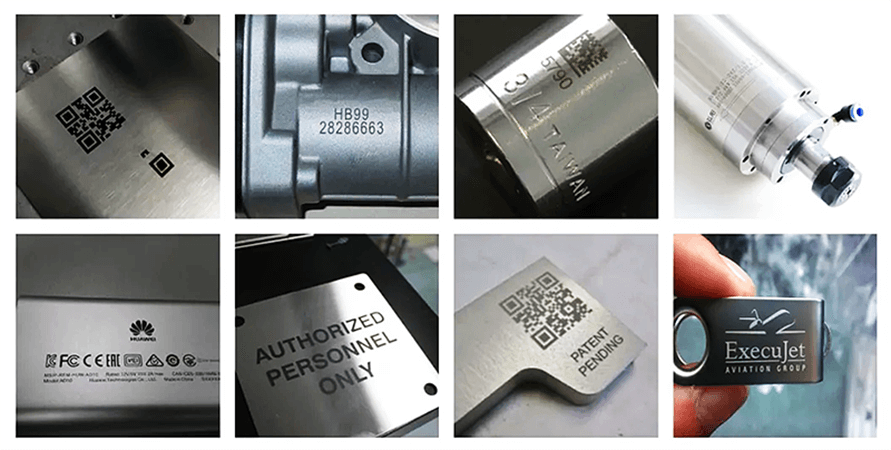
Can a fiber laser mark plastic?
Some buyers think fiber lasers only work with metals. They worry about versatility. If a machine cannot handle plastics, it limits their production. Buyers need to know if fiber lasers can give them flexibility.
Yes, fiber lasers can mark certain plastics, especially those with additives or coatings. They produce high-contrast marks that are permanent, making them suitable for labels, housings, and consumer products.
Marking Plastics with Fiber Lasers
Plastics vary in type, so results depend on composition. Some plastics absorb laser light well, while others need additives to improve contrast. Still, fiber lasers5 give permanent, professional results.
| Plastic Type | Marking Result | Example Application |
|---|---|---|
| ABS | Clear, high-contrast marks | Electronics housings |
| Polycarbonate | Strong, durable marks | Automotive dashboards |
| PVC | Good results with additives | Pipes and industrial parts |
| Nylon | Fine detail possible | Consumer goods, tools |
I once worked with a client who produced industrial housings. Their ink marks rubbed off during shipping, causing product returns. After switching to a fiber laser marker, the plastic housings carried sharp, permanent marks6. Complaints dropped to zero.
From Kirin Laser’s perspective, we guide our partners to test materials before full-scale production. This ensures the right settings for contrast and durability. I often remind customers that not all plastics behave the same. With a bit of testing, they can unlock the full potential of fiber laser marking for plastics.
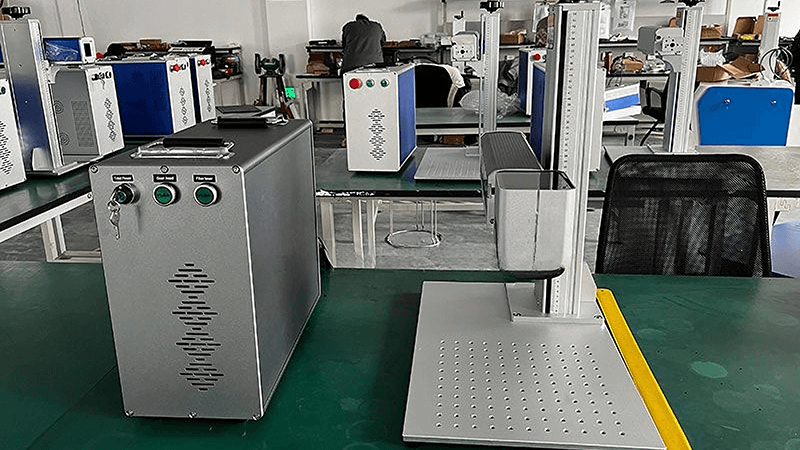
Can a fiber laser mark wood?
Many people think a fiber laser can mark anything. Then they try it on wood and see weak contrast or burn marks. They worry about safety and quality. The truth is simple: wood needs the right wavelength, or the result will disappoint.
No. In general, a fiber laser (1064 nm) is not suitable for raw wood. Wood absorbs CO₂ at 10.6 μm far better, so CO₂ lasers give cleaner and darker marks. Fiber may work only on coated, painted, or composite surfaces, and even then results vary. Use CO₂ (or UV for fine detail) for wood.
Marking Wood with Lasers: What Actually Works
Wood reacts very differently from metals and most industrial plastics. The fiber wavelength at 1064 nm does not couple well with organic fibers. This poor absorption leads to shallow discoloration, unstable contrast, and a high chance of scorching. CO₂7’s 10.6 μm wavelength interacts strongly with wood, so it produces consistent, dark marks with smoother edges. In short, match the laser to the material first, not the other way around.
| Laser Type | Wavelength | Wood Absorption | Typical Result on Raw Wood | Best Use on Wood |
|---|---|---|---|---|
| CO₂ (galvo or gantry) | ~10.6 μm | High | Dark, even marks; wide process window | Branding, logos, text, patterns |
| UV | ~355 nm | Medium–High (photo-chemical) | Fine, low-heat marks on select woods | Small text, heat-sensitive areas |
| Fiber (MOPA/CW)8 | ~1064 nm | Low | Faint color change or char; risk of scorch | Only coated/painted wood, laminates, or wood-metal composites |
At Kirin Laser, I give direct advice to distributors and end users: choose CO₂ when the job is wood. This reduces trial-and-error, keeps the workshop safer, and gives a mark customers can trust. A fiber source can force a mark on pretreated or painted wood, but the window is narrow and not stable for production. Some teams try higher power or slower speed to “make it work.” That often creates burn halos, soot, and uneven tone. It also increases fire risk. These limits come from physics, not from brand or firmware.
Why fiber struggles on wood
- Wavelength mismatch9: Wood fibers and resins do not absorb 1064 nm efficiently, so energy turns into surface char instead of a clean mark.
- Narrow process window10: Small changes in grain, moisture, or finish cause big swings in contrast. Production repeatability is hard.
- Safety and quality risks11: Prolonged dwell time can ignite fibers. Even when it does not, the mark looks smoky and uneven.
When fiber can “work” (with caveats)
- Coated or painted wood: The coating absorbs 1064 nm better than bare wood, so contrast improves. This is still case-by-case and needs tests.
- Composites and laminates: Wood-metal or specialty laminates may show acceptable marks, but consistency depends on the top layer chemistry and thickness.
- Low-volume personalization12: If you accept slower speeds and variable tone, fiber can be a stopgap. For scale, CO₂ is the robust choice.
Kirin Laser’s recommendation
From our side as a manufacturer and OEM, I guide partners to the right source for the job. For wood branding, signage, craft personalization, and furniture marks, we specify CO₂ machines. They deliver darker tone, smoother edges, and stable cycle times. If a client only owns a fiber unit, we suggest quick tests on coated samples first, with strict fire safety and fume extraction. But for any serious wood workflow, we quote a CO₂ galvo or gantry system. This protects margin, reputation, and customer satisfaction in the long run.
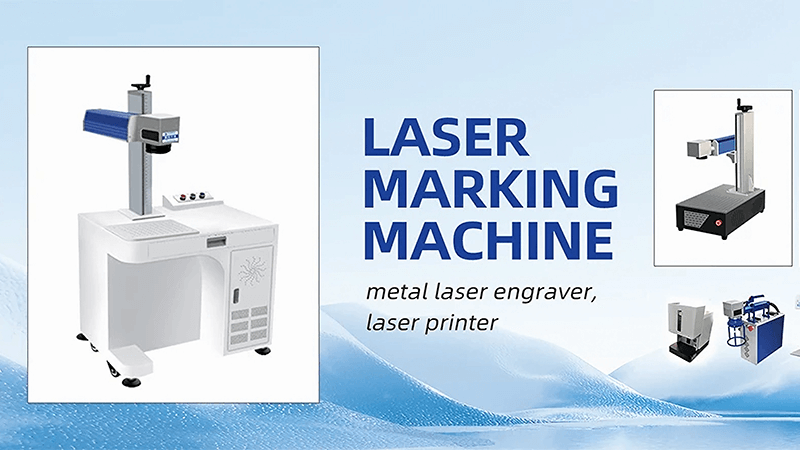
Conclusion
Fiber laser marking machines13 stand out because they combine precision, durability, and flexibility with low maintenance. They work across metals, plastics, and even wood. At Kirin Laser, we have seen our clients solve real problems, from faded labels to poor accuracy, by upgrading to fiber laser technology. For businesses like John Smith’s, choosing the right fiber laser marker is not only about equipment. It is about building trust, reducing complaints, and creating long-term value in every mark.
-
Explore the advantages of fiber laser marking machines to understand their efficiency and durability across various industries. ↩
-
Discover how fiber laser technology ensures marks that withstand harsh conditions, enhancing product durability and customer satisfaction. ↩
-
Discover how micron-level focus enhances detail in laser engraving, ensuring clarity in logos and text. ↩
-
Learn about the advantages of non-contact processes in laser marking, including tool longevity and consistent results. ↩
-
Explore this link to understand how fiber lasers enhance marking quality and durability for various plastic types. ↩
-
Discover why permanent marks are crucial for product integrity and customer satisfaction in industrial applications. ↩
-
Explore how CO₂ lasers provide consistent, dark marks on wood, ensuring quality and safety in your projects. ↩
-
Learn about the challenges of using Fiber lasers on wood and how to avoid common pitfalls in your marking process. ↩
-
Understanding wavelength mismatch can help you choose the right laser for your materials, improving your results. ↩
-
Discover how a narrow process window affects production repeatability and quality in laser marking applications. ↩
-
Learn about the potential hazards of laser marking on wood and how to mitigate them for safer operations. ↩
-
Find out how to effectively use lasers for low-volume personalization while maintaining quality and efficiency. ↩
-
Find the best laser marking machine and laser marking solutions from Kirin Laser, clicking this link to get all your needs for your business. ↩





